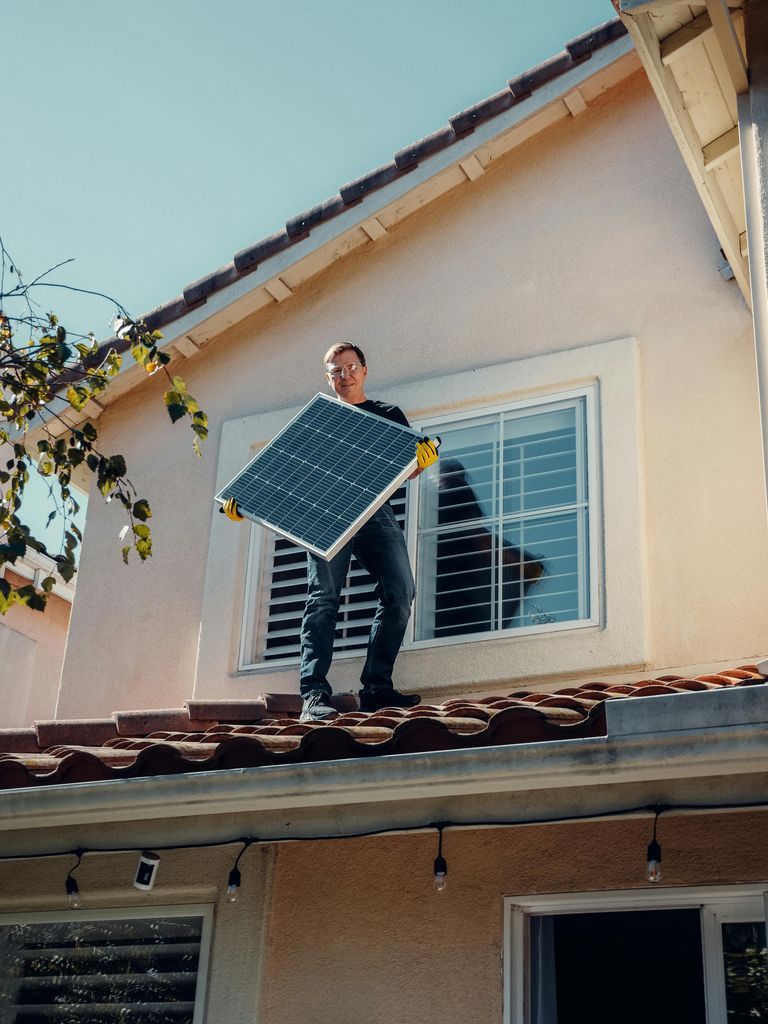When it’s time to install a new roof, careful planning can save you money and reduce stress. A well-constructed roof protects your home, enhances its appearance, and improves energy efficiency. This guide will walk you through the budgeting process of roofing installation, step by step. You’ll discover how to select materials, obtain quotes, and prepare for unexpected expenses, allowing you to manage your roofing project with confidence and ease.
Understanding the Budget Roofing Installation Process
Homeowners should recognize that the budget roofing installation process involves several steps.
First, assessing the condition of the roof helps to determine if a complete roof replacement or repairs are needed.
Next, selecting roofing materials like asphalt shingles is important, as the cost can vary based on the type chosen. Homeowners should be prepared by conducting research on prices and obtaining multiple quotes from contractors to gauge the total cost for the roofing project. It is wise to include a detailed breakdown of potential additional costs, such as underlayment and flashing, when planning. Installing self-stick underlayment with proper staples and ensuring the installation of drip edges and starter shingles is important for functionality. During the project, safety measures should be in place, including the use of utility knives and ensuring that the roof decking is secure.
Final inspections are necessary to verify that everything meets local codes, which a building official may oversee. Financing options can also ease the financial burden, allowing homeowners to make informed decisions on their new roof investment.
Choosing the Right Materials
Types of Shingles
Homeowners can select from different types of shingles for their roofing projects, including asphalt shingles, wood shingles, and metal shingles. Asphalt shingles are favored for their cost-effectiveness and ease of installation. Wood shingles provide a natural appearance but may need more upkeep. Metal shingles are robust and weather-resistant, contributing to energy efficiency. The performance and lifespan of each type depend on factors like the materials, design, and installation method.
For instance, asphalt shingles typically last 15 to 20 years, whereas metal can endure for decades with adequate maintenance. When choosing shingles, homeowners should evaluate their budget, the condition of the roof, and any repairs needed. It’s also important to measure the square footage of the roof, obtain multiple quotes from contractors, and explore financing options for unplanned expenses.
Cost Considerations
Budgeting for a roof installation involves several factors. Homeowners must research roofing materials, including options like asphalt shingles and self-stick underlayment, to find the most cost-effective and energy-efficient choices. The type of materials directly impacts total costs, such as selecting quality shingles and incorporating drip edge and step flashing for durability.
Planning is important; homeowners should obtain multiple quotes from contractors to compare prices and services, ensuring informed decisions. They must also consider additional costs, like repairs to roof decking and wall structures that may be revealed during final inspections, which could increase the project’s budget. Interest rates for financing options should be evaluated to manage the overall investment effectively. A detailed breakdown of expenses, including roofing nails, staples, and utility knife costs, will guide the budgeting process.
Finally, understanding the condition of the current roof can determine potential hidden issues like damage, allowing for more accurate budgeting for repairs and the total cost of the new roof installation.
Obtaining Quotes for Budget Roofing Installation
Comparing Different Contractors
Homeowners should focus on the reputation of contractors, making informed decisions based on reviews and experiences shared by past clients. Researching contractors by gathering multiple quotes enables homeowners to compare not just the total cost but also the quality of materials, energy efficiency, and specifics like the inclusion of features such as self-stick underlayment and step flashing.
Requesting detailed breakdowns of costs in the roofing contract, including installation fees and potential additional costs for repairs or unforeseen issues, is important. Homeowners should also look for flexibility in financing options and take note of the interest rates offered, as these can significantly influence the overall investment. Assessing the contractor’s attention to detail, like using appropriate roofing nails and ensuring the correct installation of starter shingles and drip edges, helps determine their quality of service.
A final inspection should confirm that the work meets standards set by building officials, ensuring the roof replacement is a wise investment for years to come.
Understanding Quote Breakdown
A detailed breakdown in a roofing contract should feature the total cost, roofing materials such as asphalt shingles, self-stick underlayment, and components like step flashing and starter shingles. Homeowners should note that labor costs, roof square footage, and any extra expenses for materials, such as drip edge and ridge cap shingles, influence the overall investment.
Understanding this breakdown assists homeowners in making informed choices by comparing multiple quotes, ensuring clear pricing on repairs and installation. Researching contractors and reviewing their final inspection checks guarantee quality. Transparency can be maintained by grasping terms like roofing nails and plastic backing in materials, along with financing options that can affect interest rates. Each component requires careful planning to enhance energy efficiency and overall project success. The state of the roof decking should also be flagged, as it can lead to unexpected costs.
Keeping track of these details aids in making the best choices for the roofing project.
Planning the Roofing Installation Timeline
When planning the roofing installation timeline, homeowners should assess the current roof’s condition and determine the time required for repairs or complete replacement. To effectively coordinate with contractors, gathering multiple quotes and having a detailed breakdown of the roofing project is important, including costs for materials like asphalt shingles and self-stick underlayment, along with any necessary flashing, such as step and dormer flashing.
Discussing the total cost and any additional expenses that may arise ensures that financing options fit within the budget. Weather can present challenges; heavy rain or strong winds might delay installation. To mitigate this, planning for the project during milder seasons is advisable. Homeowners can also prepare materials like shingles and underlayment in advance and monitor the forecast regularly. A clear plan will help align interests, enabling informed decisions for securing quality roofing.
Preparing Your Property for Installation
Homeowners should begin by evaluating the state of their current roof and planning for necessary repairs or replacement. A detailed breakdown of costs associated with roofing materials like asphalt shingles, self-stick underlayment, and items such as step flashing and ridge cap shingles should be created. Ensuring that the property is accessible involves relocating outdoor furniture, vehicles, and debris from the area where the roofing crew will work, which allows for smooth operations.
To protect plants, covering them with tarps or large sheets helps prevent damage from falling debris, and using plastic backing around delicate areas provides an additional safeguard. Budgeting for extra costs is advisable; setting aside some funds can help address unexpected expenses. By following these practical steps, homeowners can support the roofing project, helping workers with the installation while keeping everything intact.
Final Inspection and Quality Check
The final inspection team checks the quality of the roofing installation by ensuring proper installation of roof decking, placement of shingles and underlayment, and secure fastening of the drip edge and step flashing. They verify conformity with local building codes, measure square footage for accuracy, and assess ridge cap shingles and dormer flashing installations.
If any concerns arise, recommendations for additional repairs or adjustments, such as using roofing nails and sealant, may be provided. Homeowners receive a detailed breakdown of any extra costs for addressing these issues. The inspection also ensures all installations support the roof’s energy efficiency. Homeowners can discuss financing options if unexpected repairs impact their budget. This thorough quality assessment allows homeowners to make informed decisions about their roofing project, aligning total costs with their investment while meeting the standards set by the building official.
Maintenance Tips Post-Installation
Homeowners should perform regular inspections of their new roof to look for missing shingles, wear on the fascia, and damage to step flashing. Monitoring the roof’s condition assists in budgeting for repairs and planning for future replacements, helping to maintain the investment’s value. For minor repairs, applying roof sealant to address small leaks can prevent larger issues and save costs on extensive roof replacements later.
It’s also important to clear debris from gutters to ensure proper drainage. Homeowners should regularly check the performance of their drainage systems, making sure that water flows freely and that self-stick underlayment remains intact. During inspections, they should assess the installation of the drip edge and shingles using a utility knife, making adjustments as needed. Keeping detailed records of all maintenance activities will aid in decisions about future roofing projects.
By researching materials like asphalt shingles and ridge cap shingles, homeowners can improve energy efficiency and longevity, making informed choices based on their roof’s total cost and condition.
FAQ
What are the initial steps involved in the budget roofing installation process?
Start by assessing your roof’s condition and measuring its area. Next, choose suitable budget-friendly materials, like asphalt shingles or metal panels. Obtain necessary permits, and then create a detailed plan or timeline for the installation process. Finally, gather tools and safety equipment before beginning.
What factors should I consider to estimate the overall cost of roofing installation?
Consider materials (asphalt shingles vs. metal), roof size and pitch, labor costs, removal of old roofing, local permits, and potential repairs. For instance, choosing high-quality materials may increase upfront costs but offer better longevity and energy efficiency.
How long does a typical budget roofing installation take?
A typical budget roofing installation takes 1 to 3 days, depending on the size and complexity. For example, a simple single-family home may be done in a day, while a larger structure could take longer. Always consult your contractor for a specific timeline based on your project.
Are there any specific permits or regulations I need to be aware of before starting a budget roofing installation?
Yes, check local building codes and obtain necessary permits. For example, many cities require a roofing permit for installation and may have specific regulations regarding materials. Contact your local building department for guidance on requirements in your area.
Get your roofing project done affordably with Houstons Roofing co! Our simple, budget-friendly installation process ensures quality results without the hefty price tag. Contact us today to learn how we make roofing installation easy and cost-effective for homeowners!

